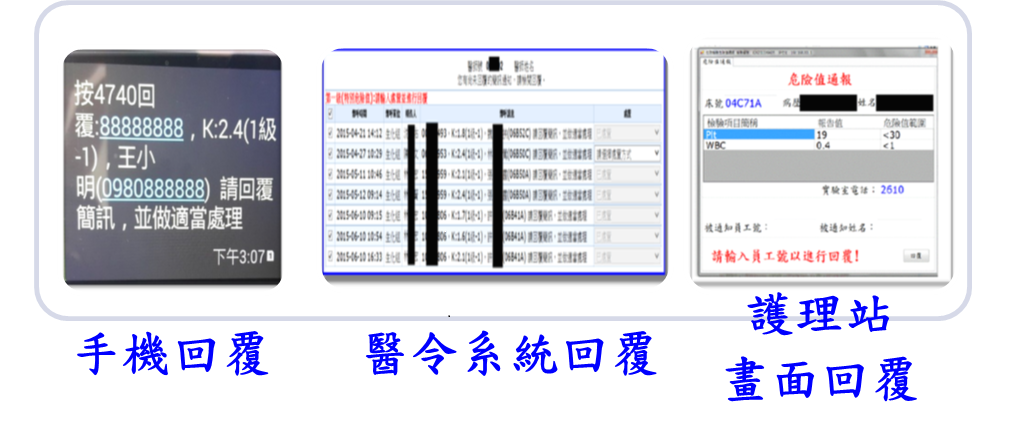Critical value, real-time reporting, and automatic notification
Le-His Tsai, Medical Technologist, Dept. of Pathology
A critical value or panic value refers to a test result that is not within the normal range and indicates that a patient has a life-threatening condition. When a critical value is detected, the laboratory immediately notifies the health care worker responsible for patient care such that they can administer the appropriate medical treatments in a timely manner. For example, a hyperkalemic or hyperglycemic condition for which a critical level is detected is verified and reported to the responsible worker within 1 h to ensure timely medical decisions and treatments. National Cheng Kung University Hospital launched a smart communication system that reports critical values and facilitates appropriate and effective cross-departmental communication when critical conditions are detected, thereby ensuring appropriate treatment for patients. The system has the following features:
1. Mistake-proofing response-to-report system that integrates multiple channels:
(1) When a critical value is detected, the Report button must be clicked to send a test report.
(2) According to different medical models, the system allows for data to be accessed from physicians’ phones, computerized physician order entry systems, or nurse station computers.
(3) A response-to-treatment window pops up when a responsible physician logs into a computerized physician order entry system.

2. The system automatically detects the status of the reporting function; whenever the function is not working properly, it initiates a backup system to establish a comprehensive intelligent network.
(1) When text messages cannot be sent, the manual reporting system is initiated.
(2) An attention-attracting and team supervision model is established: Music is played when the manual reporting window pops up. If a user stays on the window for longer than a set timeframe, the window changes colors and displays a scrolling text warning, and a text message is sent to the supervisor.
(3) Continuous cross-departmental team support system: The system incorporates a back-up physician work schedule; when a physician cannot be reached within 10 min after the backup system is activated, the “Report to Switchboard Operator” button is automatically displayed, and it can be used to send a request to an operator to contact the physician directly.
3. The system displays step-by-step screens that allow healthcare workers to perform manual reporting intuitively without having to memorize anything and to record the full reporting process:
(1) The system guides health care workers to complete the reporting process step by step, which reduces time and labor required for reporting, prevents missing data, and displays the contact information of the responsible physician to reduce the time spent on searching for information.
(2) The system records the full reporting process, thereby eliminating the use of paper-based and written documentation, reducing errors and paper use, and reducing time and labor required for reporting.
(3) Zero barriers in communication: The system synchronizes information on the systems used by medical laboratory scientists, physicians, and the switchboard operator, thereby minimizing ineffective cross-departmental communication.
4. The system automatically verifies whether a patient is an inpatient or has been discharged, and it sends a text message to the responsible health care worker to notify them of the patient’s critical value and contact information, providing them with a straightforward method for requesting follow-up appointments with patients.
